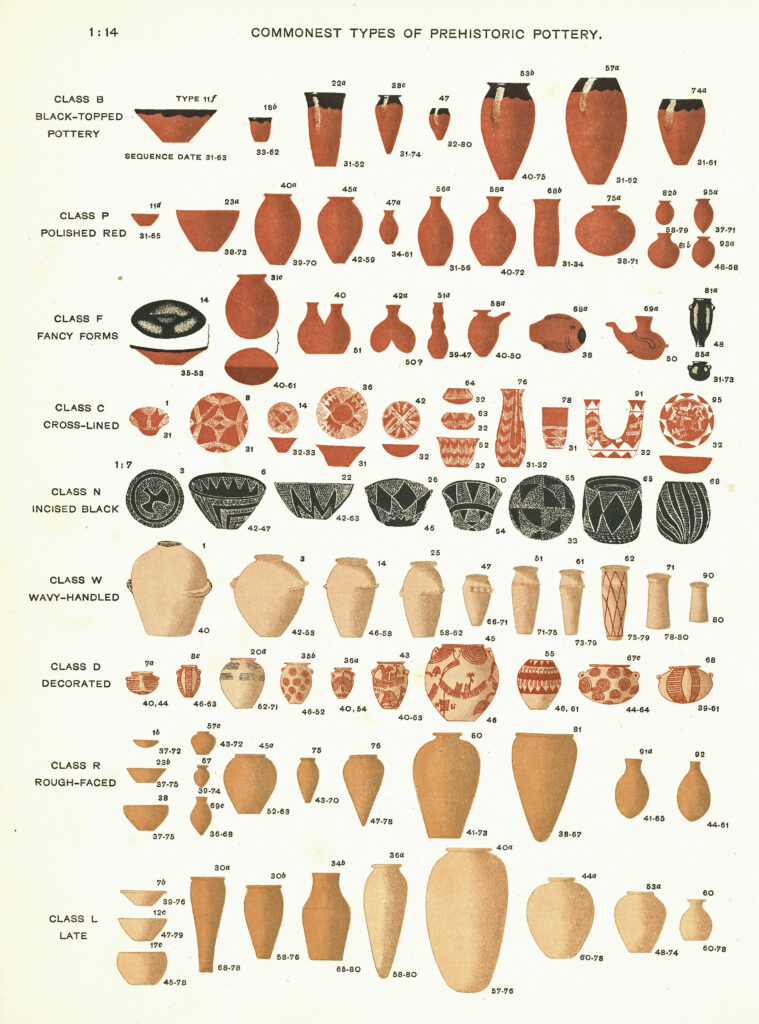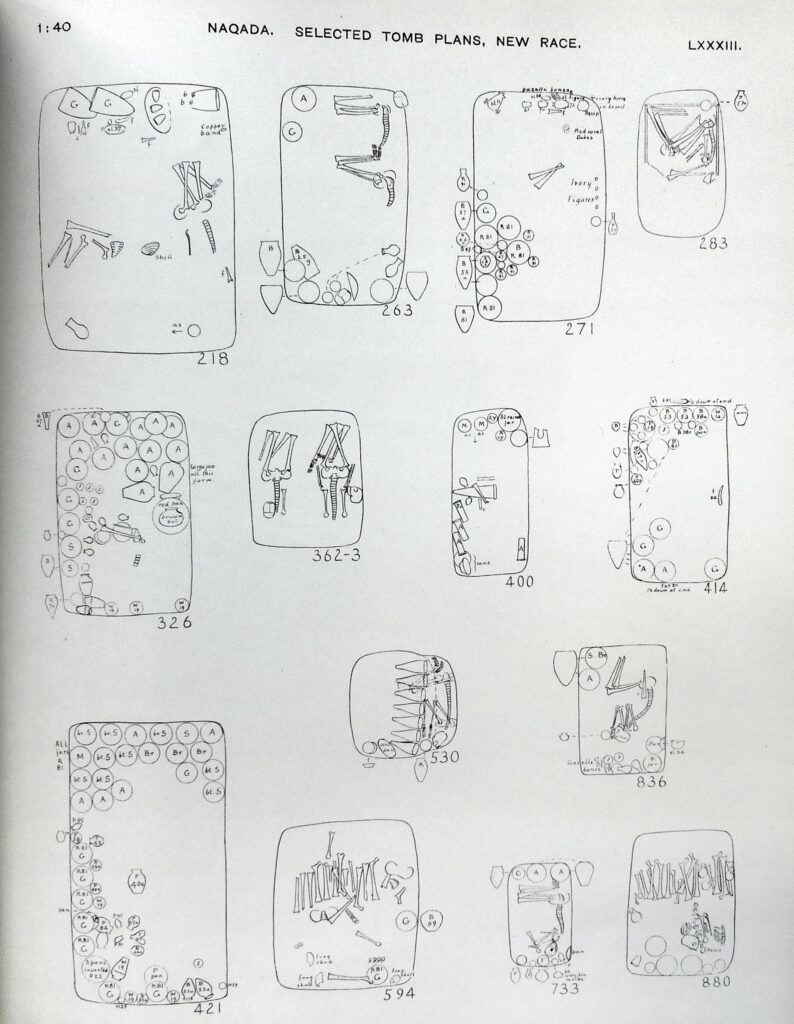Sir William Matthew Flinders Petrie was an influential archaeologist who primarily worked in Egyptology. He published around 1,000 pieces on ancient through medieval Egypt, but is most well-known for his work on ancient Egyptian pottery seriation. He is credited with inventing seriation as a whole, which is the practice of organizing artifacts in chronological order. In 1901, Flinders Petrie created a revolutionary pottery seriation chart based on predynastic burial sites at Abadiyeh and Hu, which organized pottery into different classes and ages. These classes include incised black, polished red, wavy-handled, and so on. His methodology combined stratigraphy and visual cues, but unfortunately, he often included personal biases and wild theories in his findings. Much of Flinders Petrie’s findings have been revised or debunked. However, his invention of seriation has been adopted by most archaeologists, and is still used today. It was the best form of dating before modern methods, such as radiocarbon dating.
Using seriation, Flinders Petrie aimed to determine the ages of various burial sites. He had assistants draw the pots he found, then he organized them into types and ages. He noted that though form stayed the same, styles varied, which allowed him to further narrow down the age of the graves. Because of the unique style of the burials (not mummies, positioned bodies, etc), Flinders Petrie actually decided that he had discovered a new race, rather than the graves being Egyptian. This demonstrates that although seriation can provide relative ages for sites, it does not determine what the content actually means.
Other than Egypt, Flinders Petrie worked on sites in Palestine and Britain, and made discoveries concerning Greece and Israel. On many of these occasions, he applied seriation. Aside from pottery, he conducted research on homes, the pyramids, ancient cities, papyrus scrolls, and much more. His life consisted of numerous important contributions to archaeology (he was even knighted for them), and he died at age 89 in Jerusalem.
Of course, seriation is not only used for pottery. It can be used for almost any artifact, at any site, and anywhere in the world. It can even be applied to disciplines such as art history. In the textbook, the example given was about gravestones in Massachusetts and how their design indicates what time period they were made. They are extremely far removed – physically and temporally – from predynastic Egypt, yet the same technique can be applied to both burial sites. Though Sir William Matthew Flinders Petrie had his fair share of strange ideas, his invention of seriation has, and will, remain a staple of archaeological dating methods.
Sources:
https://the-past.com/shorts/the-picture-desk/flinders-petries-sequence-dating-chart/ (info + photo)
https://fitzmuseum.cam.ac.uk/explore-our-collection/highlights/context/patrons-donors-collectors/william-matthew-flinders-petrie (info)
https://www.whipplelib.hps.cam.ac.uk/special/exhibitions-and-displays/conflicting-chronologies/establishing-predynastic-egypt (info + photo)
https://www.britannica.com/biography/Flinders-Petrie (info)
Other references:



“he often included personal biases and wild theories in his findings…However, his invention of seriation has been adopted by most archaeologists, and is still used today.” — How do archaeologists of the present day avoid falling into the trap of personal biases when applying seriation, and how was this technique revised to better suit more current archaeological agendas?